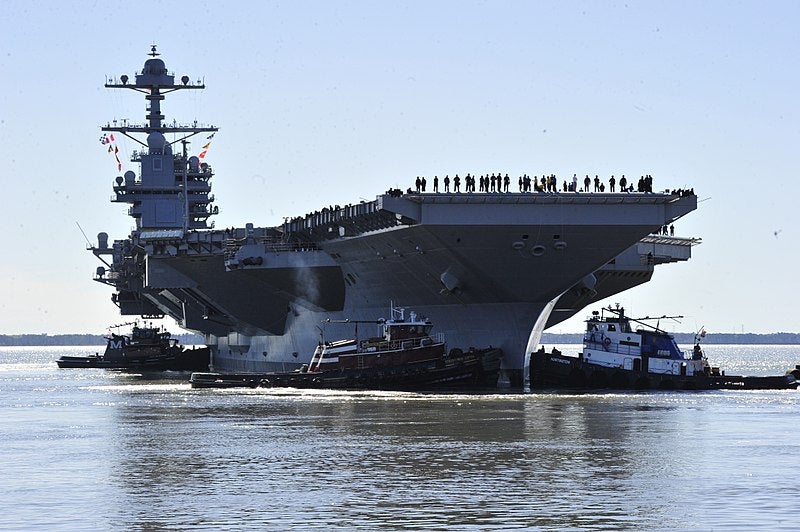
The latest generation of the US Navy’s USS Gerald R Ford (CVN 78) aircraft carrier’s Ship Self Defense System (SSDS) integrated combat system (ICS) has completed its final developmental test.
In partnership with the US Navy, SSDS contractor Raytheon performed the test from the navy’s unmanned Self Defense Test Ship off the coast of California.

Discover B2B Marketing That Performs
Combine business intelligence and editorial excellence to reach engaged professionals across 36 leading media platforms.
The test involved simulating a raid scenario that the lead vessel of the Gerald R Ford-class CVN 78 may encounter following its deployment.
During the exercise, the SSDS ICS located, classified, tracked and engaged two anti-ship missile surrogate targets.
Raytheon SSDS programme manager Mike Fabel said: “This successful dual-target test demonstrates the maturity of the Ship Self Defense System ICS and paves the way for operational testing to begin.
“SSDS is a critical capability that enables CVN 78 to defend herself and her crew against current and emerging threats.”

US Tariffs are shifting - will you react or anticipate?
Don’t let policy changes catch you off guard. Stay proactive with real-time data and expert analysis.
By GlobalDataCompletion of the final developmental test leads the way for US Navy operational testing.
Raytheon’s SSDS features a dual-band radar (DBR), cooperative engagement capability (CEC) that validates and processes the DBR data. In addition, it has an SSDS to process the CEC data and determine the appropriate engagement ranges, as well as evolved SeaSparrow missile and rolling airframe missile.
The combat system developed for Gerald R Ford has successfully engaged three targets over the course of its first two test exercises.
In February, the navy performed the first live-fire test of the SSDS ICS. The system successfully engaged an unmanned aerial vehicle target off the coast of California.
The combat system is integrated on several US carriers and amphibious ships, including CVN, LSD, LPD, LHA and LHD classes.
Huntington Ingalls Industries’ Newport News Shipbuilding division delivered CVN 78, worth nearly $13bn, to the US Navy in 2017.
The second carrier USS John F Kennedy (CVN 79) is expected to be delivered in 2020. In January this year, a $15.2bn contract modification was awarded for the detail design and construction of USS Enterprise (CVN 80) and yet-to-be-named CVN 81.





